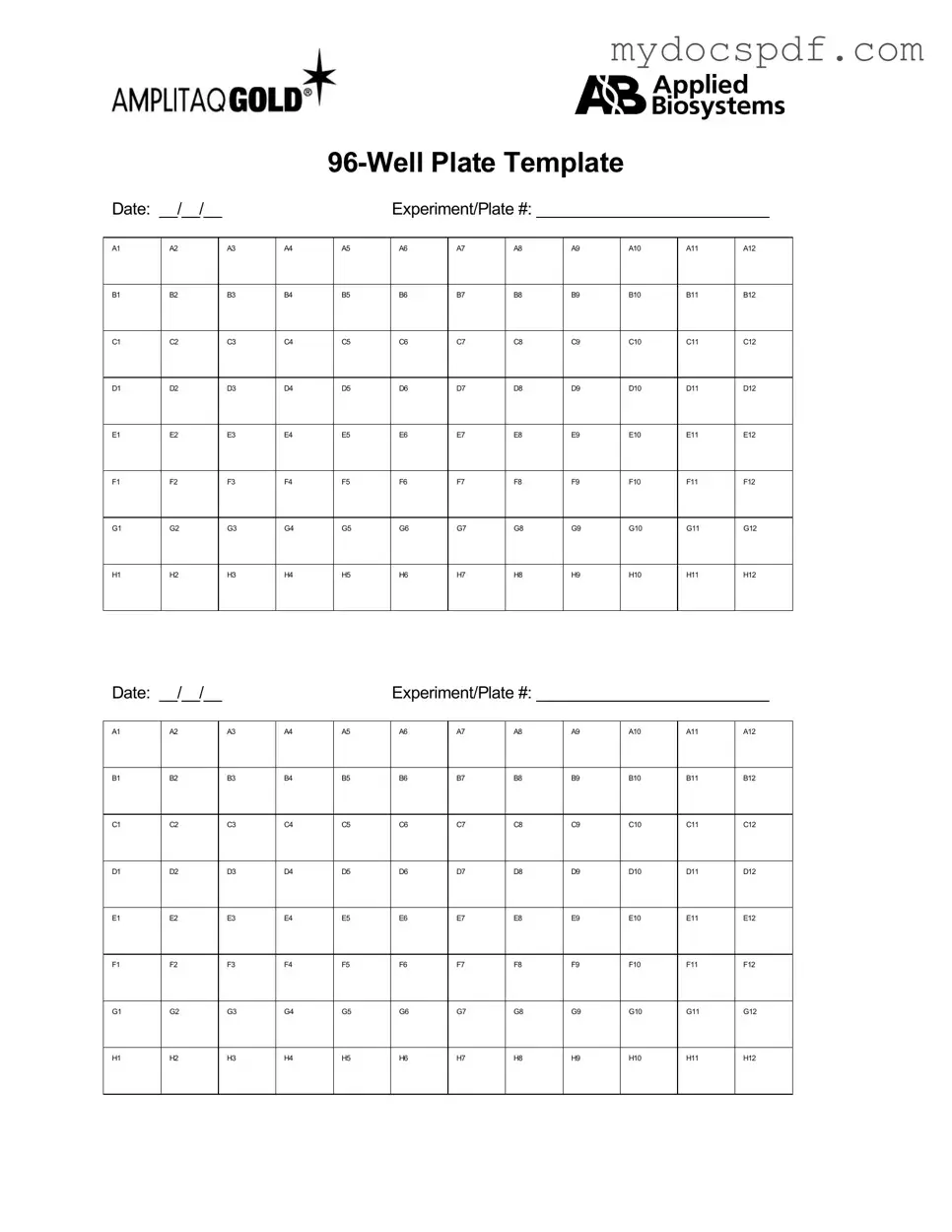The 96 Well form plays a crucial role in various scientific and research contexts, particularly in fields such as biology, chemistry, and environmental science. This versatile tool is designed to facilitate the organization and analysis of samples, enabling researchers to conduct experiments efficiently. Typically, the form accommodates 96 individual wells, each capable of holding a specific volume of liquid, which allows for high-throughput testing. Users often find that the layout simplifies the tracking of samples, making it easier to record data and manage results. Additionally, the 96 Well form supports a variety of applications, from enzyme assays to PCR reactions, highlighting its adaptability in laboratory settings. By standardizing the format, researchers can ensure consistency and accuracy in their experiments, ultimately leading to more reliable outcomes. As scientific inquiry continues to advance, the importance of such tools cannot be overstated, as they provide the foundation for innovative discoveries and breakthroughs.

